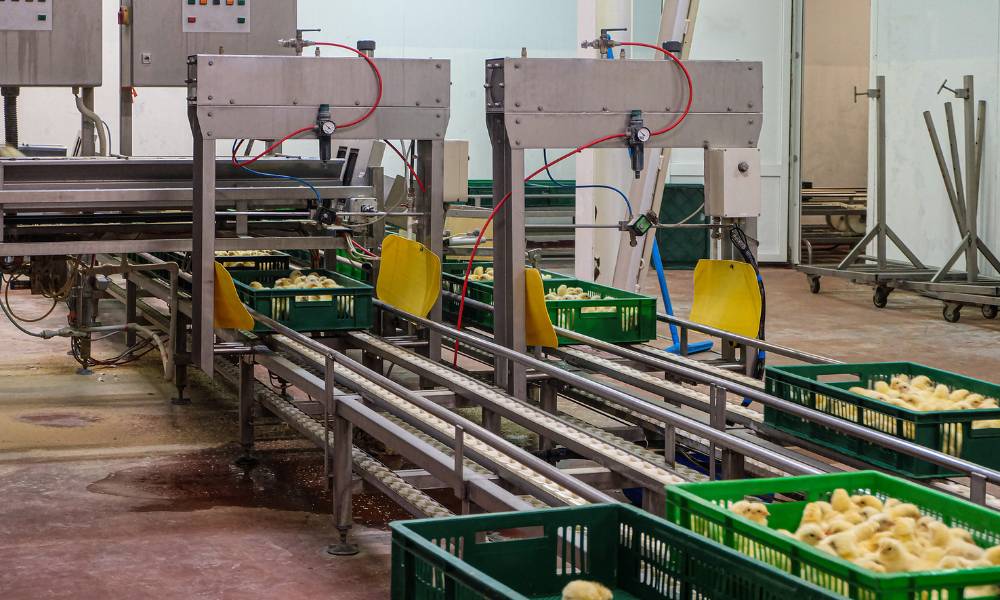Biosecurity is a crucial aspect of hatchery operations that plays a pivotal role in safeguarding the health and productivity of poultry or fish. In this article, we will explore the best practices and protocols for ensuring biosecurity in hatcheries to mitigate the risks of disease outbreaks and contamination. By adopting comprehensive biosecurity measures, hatchery operators can create a safe and conducive environment for their livestock, leading to increased profitability and sustainability.
Understanding Biosecurity in Hatchery Operations
1 What is Biosecurity?
Biosecurity refers to the set of management practices and protocols designed to prevent, control, and manage the spread of infectious diseases, pathogens, and pests within a hatchery facility. It involves implementing stringent measures to minimize the introduction and transmission of harmful agents that can compromise the health and well-being of the livestock.
2 Importance of Biosecurity in Hatcheries
Maintaining a high level of biosecurity is crucial in hatcheries due to the inherent vulnerability of the young animals. Chicks, poults, or fry have immature immune systems, making them more susceptible to diseases. An outbreak of a contagious disease in a hatchery could result in severe economic losses, disruption of the supply chain, and even threaten the entire industry.
Common Biosecurity Challenges
1 Disease Spread
Disease transmission is one of the primary concerns in hatcheries. The movement of personnel, equipment, and vehicles can inadvertently introduce pathogens or contaminated materials. Furthermore, the close proximity of animals in a hatchery setting can facilitate rapid disease spread, leading to devastating consequences.
2 Contamination Risks
Hatcheries face contamination risks from various sources, including water, feed, and equipment. External factors such as wild birds and pests can also introduce contaminants, necessitating stringent biosecurity measures to prevent these entry points.
3 Human-Induced Threats
Human activities can inadvertently introduce diseases into a hatchery. Lack of proper hygiene, inadequate training, and non-compliance with biosecurity protocols can compromise the entire operation, making it imperative to focus on human-induced biosecurity threats.
Best Practices for Ensuring Biosecurity in Hatcheries
1 Facility Design and Layout
The physical layout of a hatchery should be designed to minimize the risk of disease spread. Proper zoning, ventilation, and separation of different production stages can help in controlling the movement of personnel, livestock, and equipment.
2 Sanitation and Disinfection
Maintaining impeccable cleanliness and sanitation is crucial. Regular disinfection of surfaces, equipment, and vehicles can prevent the build-up and transmission of pathogens.
3 Access Control Measures
Limiting access to authorized personnel and visitors can reduce the risk of disease introduction. Implementing strict access control measures can prevent unauthorized entry and potential contamination.
4 Pest Control Strategies
Effective pest control is essential to keep wild birds and rodents away from the hatchery. These pests can carry diseases and introduce contaminants, posing a significant threat to the livestock.
5 Biosecurity Education and Training
Ensuring that all hatchery staff are well-informed about biosecurity protocols is vital. Regular training programs can raise awareness and ensure compliance with established biosecurity practices.
6 Health Monitoring and Surveillance
Regular health monitoring and surveillance of the livestock can help identify early signs of disease outbreaks. Prompt detection allows for immediate actions to prevent further spread.
7 Biosecurity Audits and Reviews
Conducting periodic biosecurity audits and reviews ensures that all measures are up-to-date and effective. These audits help identify areas of improvement and strengthen overall biosecurity.
Protocols for Biosecurity Implementation
1 Biosecurity Protocol for Personnel
All personnel entering the hatchery should follow a strict biosecurity protocol. This includes wearing dedicated clothing, footwear, and following hand hygiene procedures.
2 Biosecurity Protocol for Equipment and Vehicles
Vehicles and equipment used in the hatchery should be regularly cleaned and disinfected. They should also have designated entry points to prevent cross-contamination.
3 Biosecurity Protocol for Incoming Livestock
Any incoming livestock should go through a quarantine process to ensure they are disease-free before being introduced to the main hatchery area.
4 Biosecurity Protocol for Waste Management
Proper waste management is essential to prevent disease transmission. Disposal of waste should be done in a manner that minimizes contact with the healthy livestock.
Advantages of Effective Biosecurity Practices
Adopting effective biosecurity practices in hatcheries offers numerous advantages. It reduces the risk of disease outbreaks, ensures the well-being of the livestock, and enhances overall productivity. Additionally, it boosts the hatchery’s reputation, as customers prefer to source livestock from facilities with robust biosecurity measures.
Conclusion
In conclusion, biosecurity is paramount in hatchery operations to safeguard the health and productivity of the livestock. By following the best practices and protocols outlined in this article, hatchery operators can create a secure environment that mitigates the risks of disease spread and contamination. Embracing a culture of biosecurity awareness and compliance will lead to thriving hatcheries and a sustainable industry.





